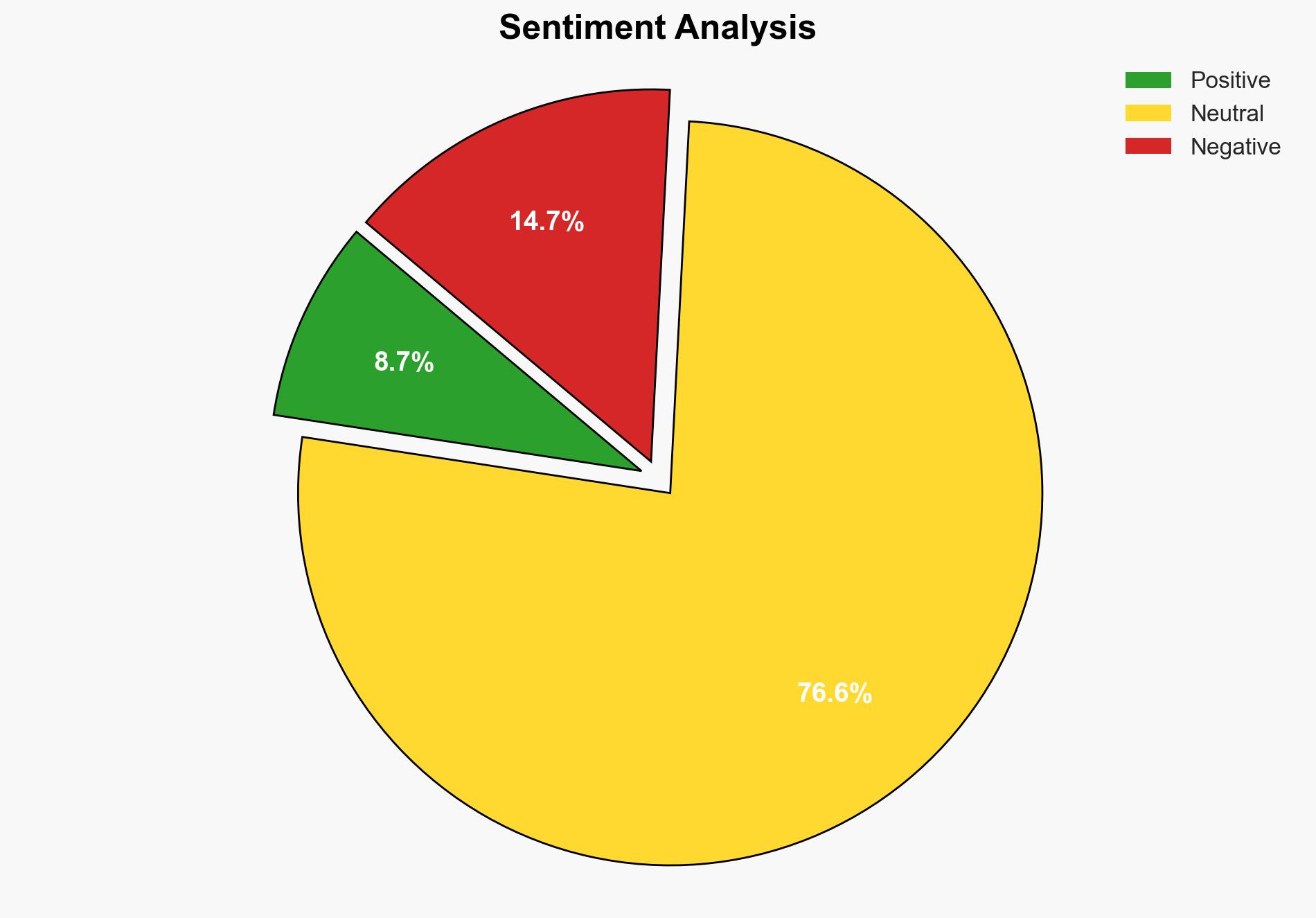Five key moments in the battle for Khartoum – BBC News
Published on: 2025-03-22
Intelligence Report: Five key moments in the battle for Khartoum – BBC News
1. BLUF (Bottom Line Up Front)
The battle for Khartoum has seen significant developments as the Sudanese Army attempts to regain control from the Rapid Support Forces (RSF). Key strategic victories include breaking the siege of the army headquarters, blocking RSF escape routes, and securing vital infrastructure such as bridges and the presidential palace. These events indicate a shift in momentum favoring the Sudanese Army, but the conflict continues to pose severe humanitarian and regional stability risks.
2. Detailed Analysis
The following structured analytic techniques have been applied for this analysis:
General Analysis
The conflict in Khartoum began in April when the RSF launched an attack on the Sudanese Armed Forces (SAF), capturing significant territory, including parts of the capital. The fighting has resulted in thousands of deaths and displaced millions, exacerbating an already dire humanitarian crisis. Recent military advances by the Sudanese Army, supported by new alliances, have allowed them to regain control of strategic areas, including the presidential palace and key bridges. These victories have been verified through video and satellite imagery analysis.
3. Implications and Strategic Risks
The ongoing conflict poses significant risks to national security and regional stability. The potential for further escalation could lead to increased displacement and humanitarian needs. The disruption of key infrastructure and economic activities threatens economic interests both locally and regionally. The involvement of various ethnic militias and alliances adds complexity to the conflict, potentially prolonging instability.
4. Recommendations and Outlook
Recommendations:
- Enhance diplomatic efforts to mediate a ceasefire and initiate peace talks between conflicting parties.
- Increase humanitarian aid and support to affected regions to mitigate the crisis’s impact on civilians.
- Strengthen regional cooperation to address cross-border implications and prevent further destabilization.
Outlook:
In a best-case scenario, successful mediation could lead to a ceasefire and eventual peace agreement, stabilizing the region. In a worst-case scenario, continued fighting could result in further humanitarian disasters and regional spillover. The most likely outcome is a protracted conflict with intermittent advances by both sides, requiring sustained international attention and intervention.
5. Key Individuals and Entities
The report mentions significant individuals such as Abdel Fattah al Burhan and organizations like the Sudanese Army and the Rapid Support Forces. The strategic victories and ongoing conflict dynamics are influenced by these entities, shaping the current and future landscape of the battle for Khartoum.




